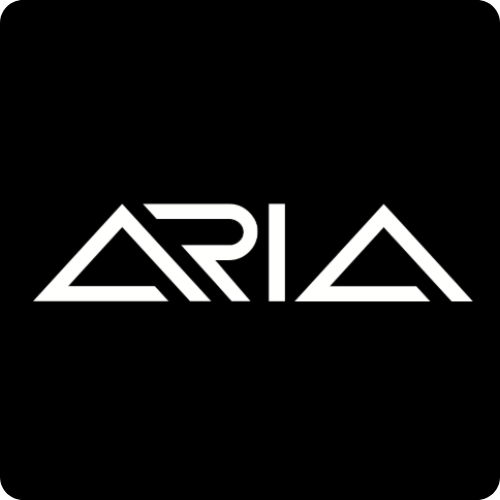
Moonpay
MoonPay is a financial technology company that serves as a bridge between the traditional financial system and the Web3 economy. Its core business is providing a seamless and user-friendly payment infrastructure for buying and selling cryptocurrencies and NFTs. MoonPay offers both on-ramp services, allowing users to purchase digital assets with fiat currencies, and off-ramp services, enabling them to convert crypto back into traditional money. This is facilitated through a wide range of familiar payment methods, including credit/debit cards, bank transfers, Apple Pay, and Google Pay.
For businesses, MoonPay’s primary product is an embeddable widget that can be integrated directly into decentralized applications, wallets, and NFT marketplaces. This allows end-users to acquire digital assets at the point of use without having to leave the application, significantly simplifying the onboarding process and improving conversion rates for developers. The company handles all the complex backend processes, including payment processing and regulatory compliance such as know-your-customer and anti money laundering checks.
As a multi-chain platform, MoonPay supports a vast array of blockchain networks, including an official integration with Hedera. This partnership allows users to directly purchase HBAR, Hedera’s native cryptocurrency, making the ecosystem more accessible to a global audience.
Project Information
Related Projects

HashSea is a dedicated NFT marketplace and launchpad platform operating on the Hedera blockchain network. It provides a space for creators and buyers to mint live, purchase assets on secondary market or create their own NFT assets while engaging with the other digital assets native to the Hedera network.
As a marketplace, HashSea facilitates the discovery, purchase, and sale of Hedera NFTs, leveraging the network's high throughput and remarkably low, predictable transaction fees. Meanwhile, functioning as a launchpad, HashSea empowers creators by offering tools and services to easily mint and debut new projects directly to the Hedera ecosystem. This dual role positions HashSea as a key enabler for both established and emerging artists and developers looking to capitalize on Hedera's efficient, carbon-negative infrastructure.
HashSea’s utilization of the Hedera Token Service (HTS) allows it to offer features embedded features such as native, enforceable royalties for creators and near instant transactions. It supports the HashPack wallet for minting, listing, and trading NFTs on the Hedera blockchain network.

The Aria Network is an integrated media company founded in 2018 and based in Los Angeles, California. Its focus is on creating immersive digital experiences that bridge the gap between physical and virtual assets. Aria works with global brands, sports leagues, and celebrities to develop new forms of engagement through augmented reality and other digital technologies.
Aria's primary product is the Aria Exchange, a platform for non-fungible tokens (NFTs). A key feature of the exchange is the concept of "living NFTs," which allows creators to continuously add new content and value to a token after its initial purchase. The platform is designed to be carbon-negative, tracking the carbon footprint of each transaction and offsetting it through partnerships.
The Aria Exchange is built with a direct and foundational connection to the Hedera network. Every NFT minted and traded on the Aria Exchange is securely stored on the Hedera distributed ledger. This integration provides an immutable and transparent record of ownership and transaction history for every digital asset.

Atma.io, a venture by Avery Dennison, is a connected product cloud platform designed to bridge the physical and digital asset worlds by assigning unique digital identities to everyday items. The Atma platform enables end-to-end supply chain transparency via the Hedera blockchain, allowing businesses and consumers to track products from source to point of sale and beyond. It accomplishes this through the use of identification technologies such as RFID and QR codes to capture and manage vast amounts of data about individual product journeys.
A crucial component of Atma.io's architecture is its use of the Hedera Hashgraph distributed ledger technology (DLT) to ensure the immutability and verifiability of supply chain events and sustainability credentials. This provides a trusted layer for product authentication and helps combat counterfeiting.
Serving a multitude of industries, including apparel, retail, food and beverage, and pharmaceuticals, Atma.io offers solutions for enhanced inventory management, improved operational efficiency, and deeper consumer engagement. It can be utilized to share verifiable product origin stories, provide detailed sustainability information, and support circular economy initiatives.

Mynt Music is a Web3 platform designed to address the challenges artists face with traditional streaming services, such as low revenue and a lack of direct engagement with fans. By leveraging blockchain technology, Mynt provides artists with the tools to take greater control over their work and monetization.
The core of the Mynt platform is built on the Hedera network. This allows artists to mint their music, artwork, and other exclusive content as non-fungible tokens (NFTs) on the Hedera Token Service (HTS). In addition to NFTs, artists can create and issue their own unique, fungible "Fan Tokens." These tokens function as a digital key to an artist's community, granting holders access to exclusive content, unreleased tracks, private channels, and unique real-world experiences. This model transforms passive listeners into active stakeholders in an artist's career.
By building on Hedera, Mynt benefits from the network's high speed, sustainability, and low, predictable transaction fees, which are essential for processing the high volume of micro-transactions involved in a thriving fan economy.
